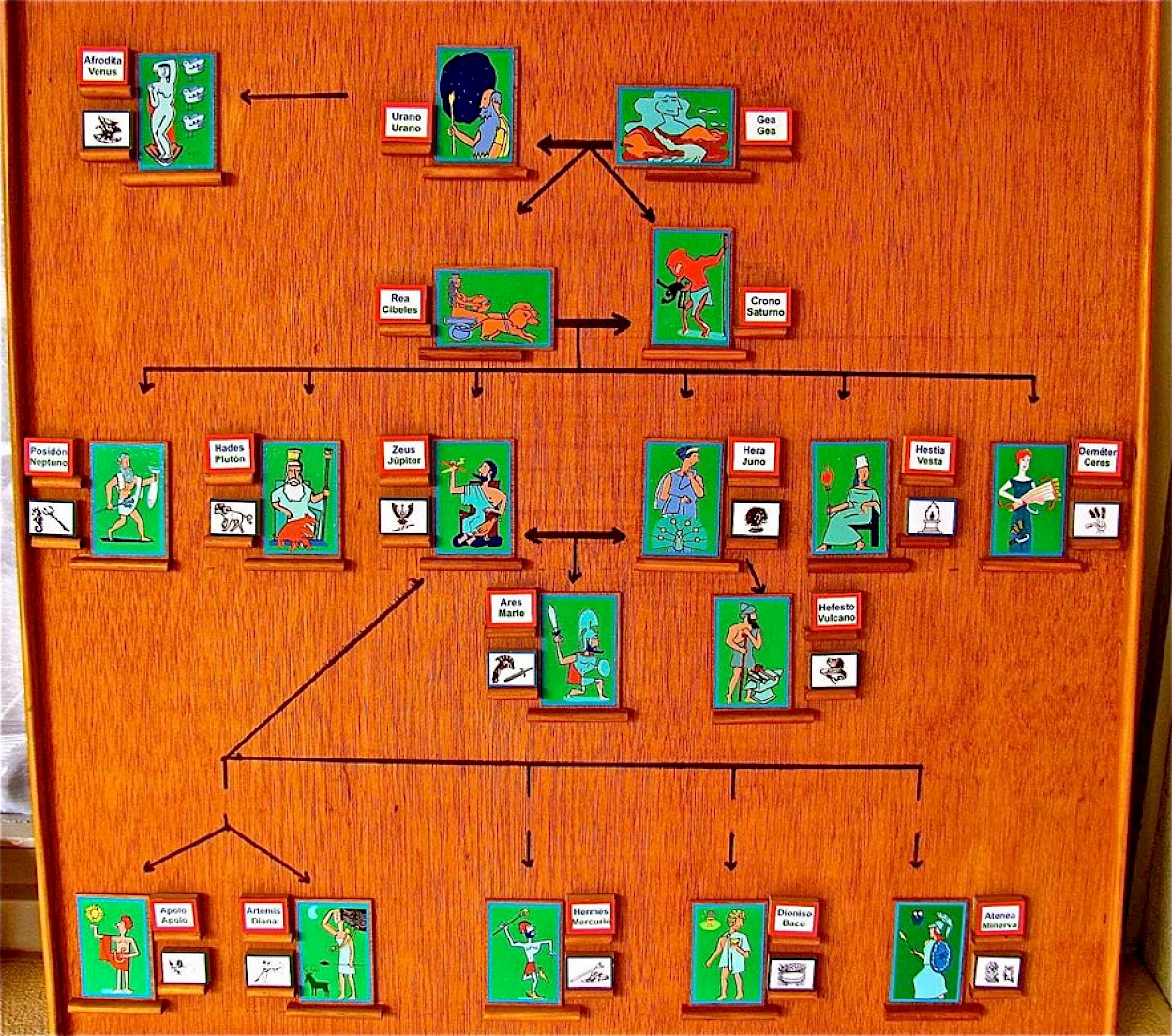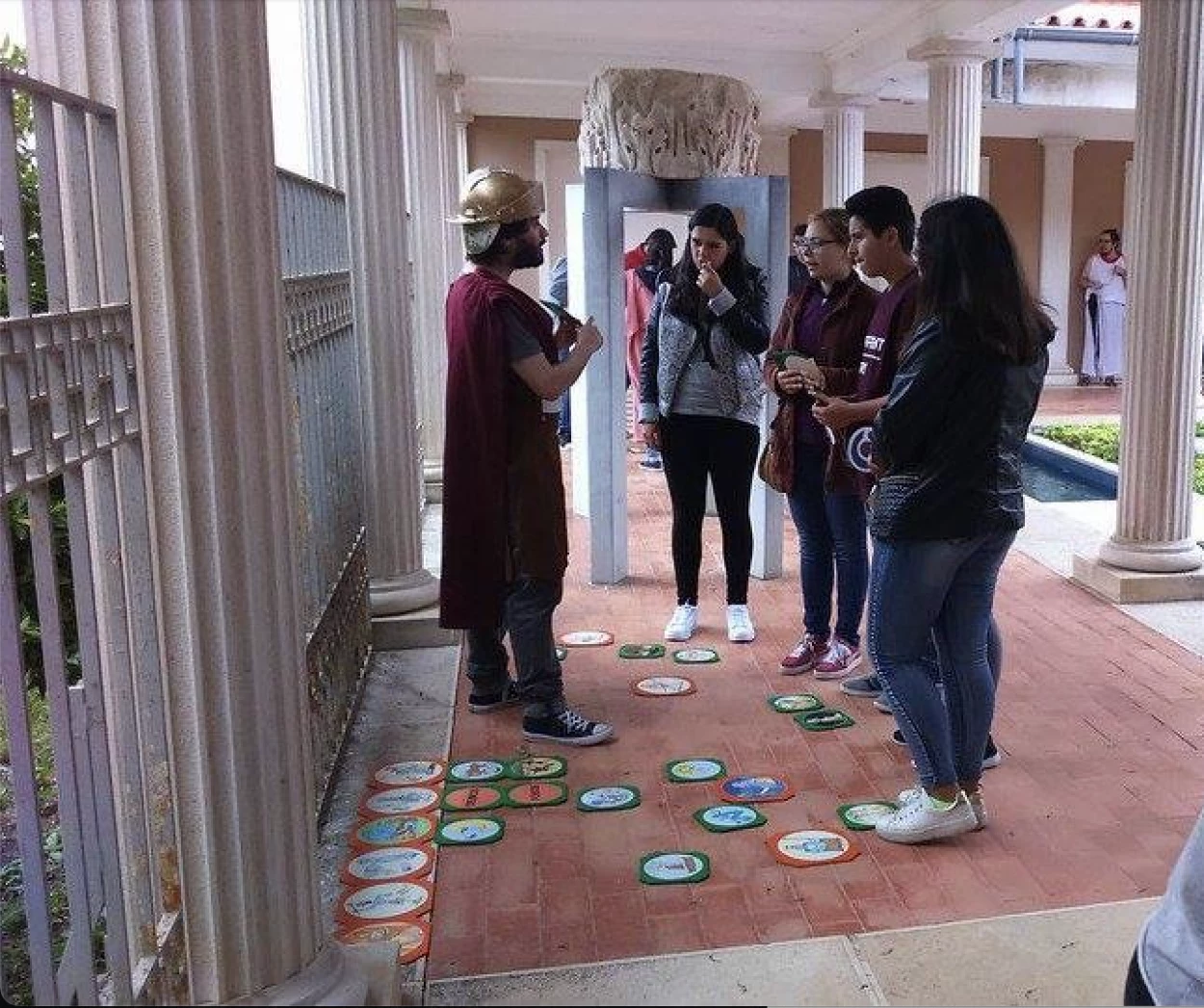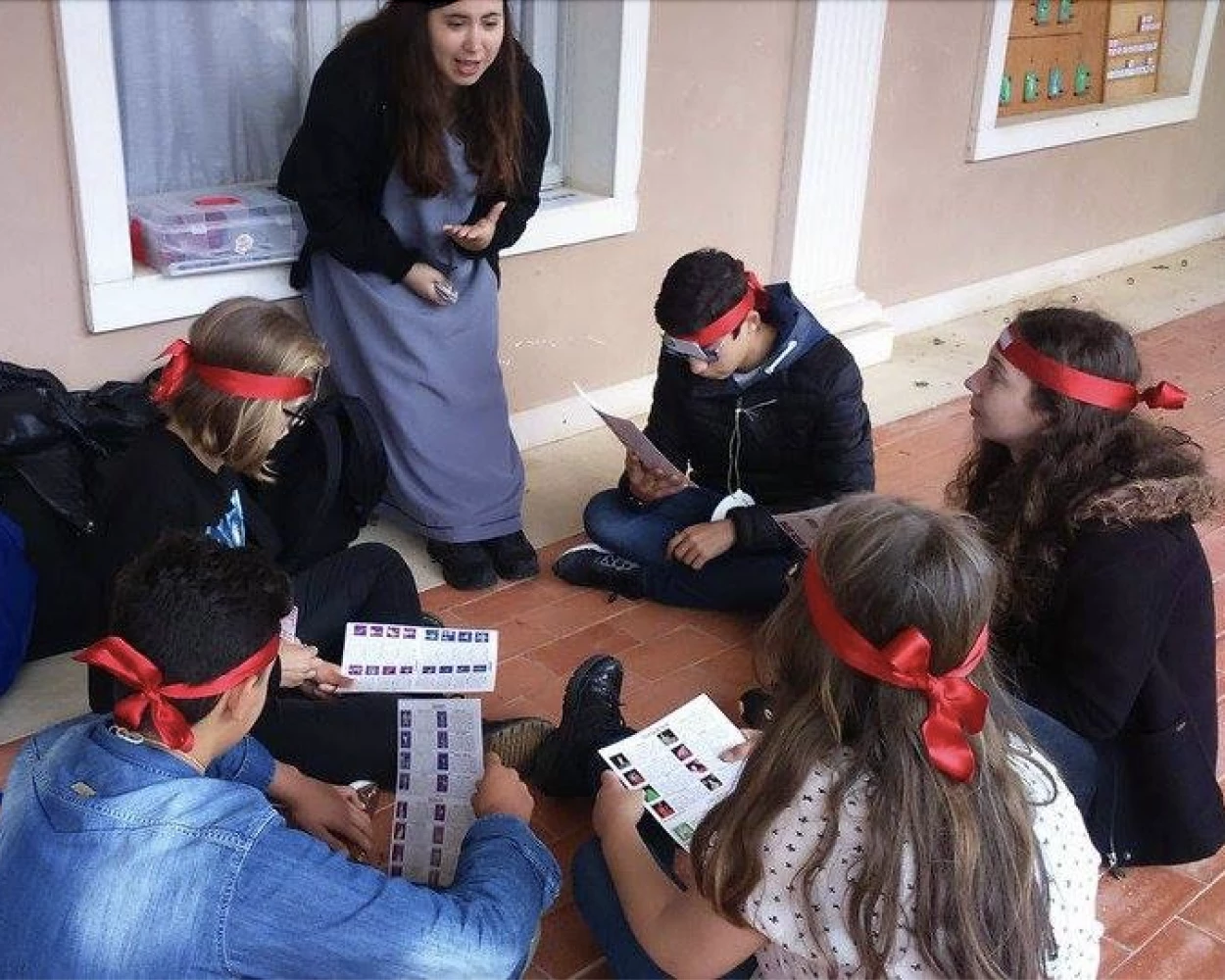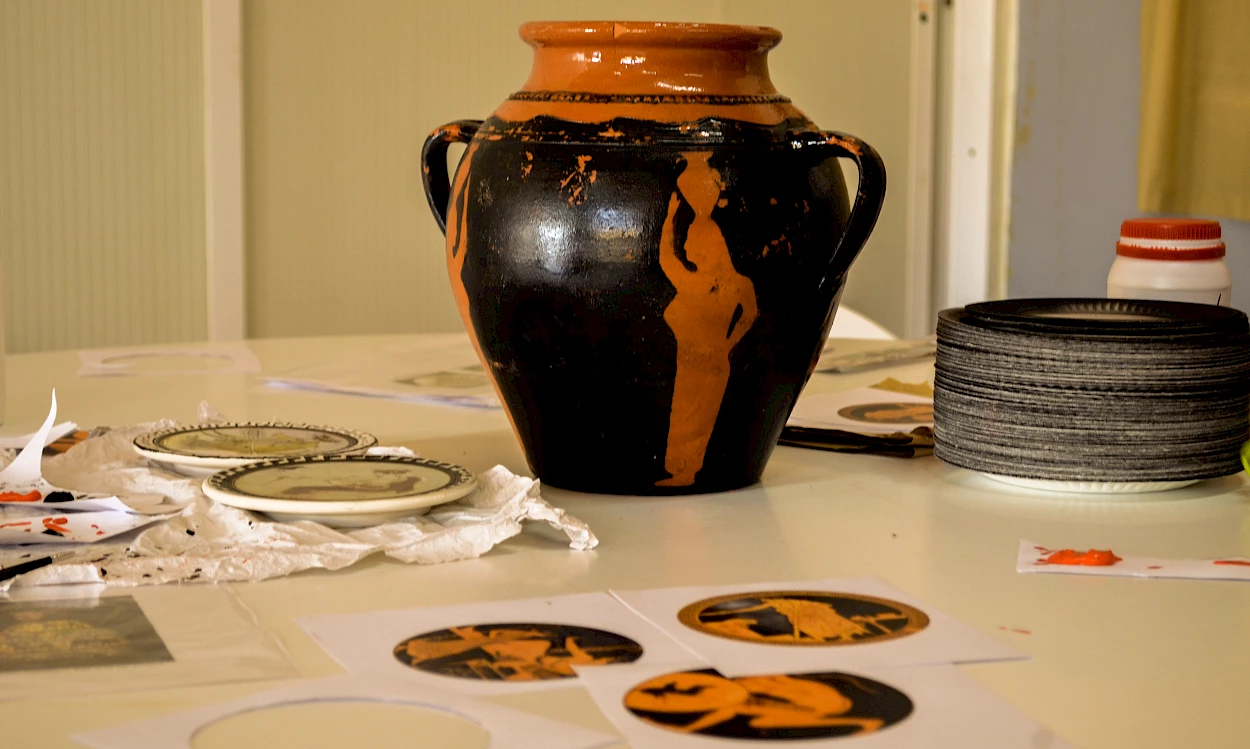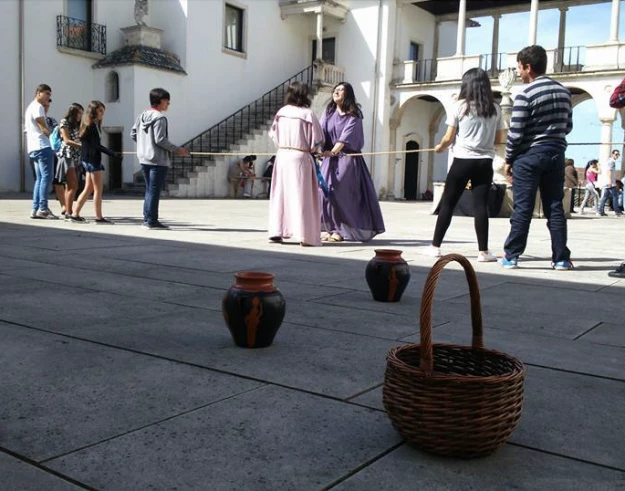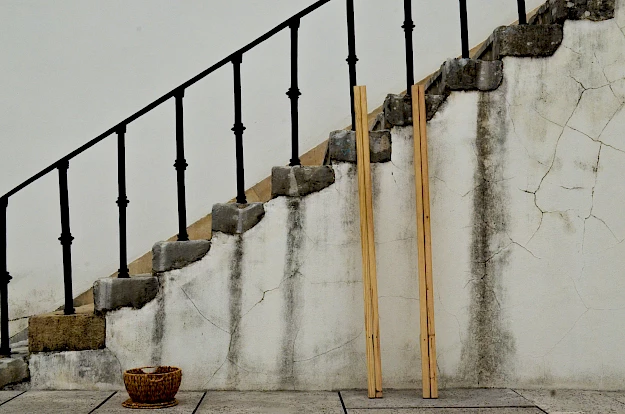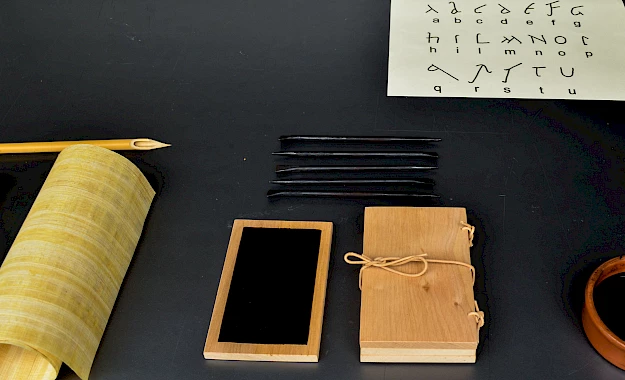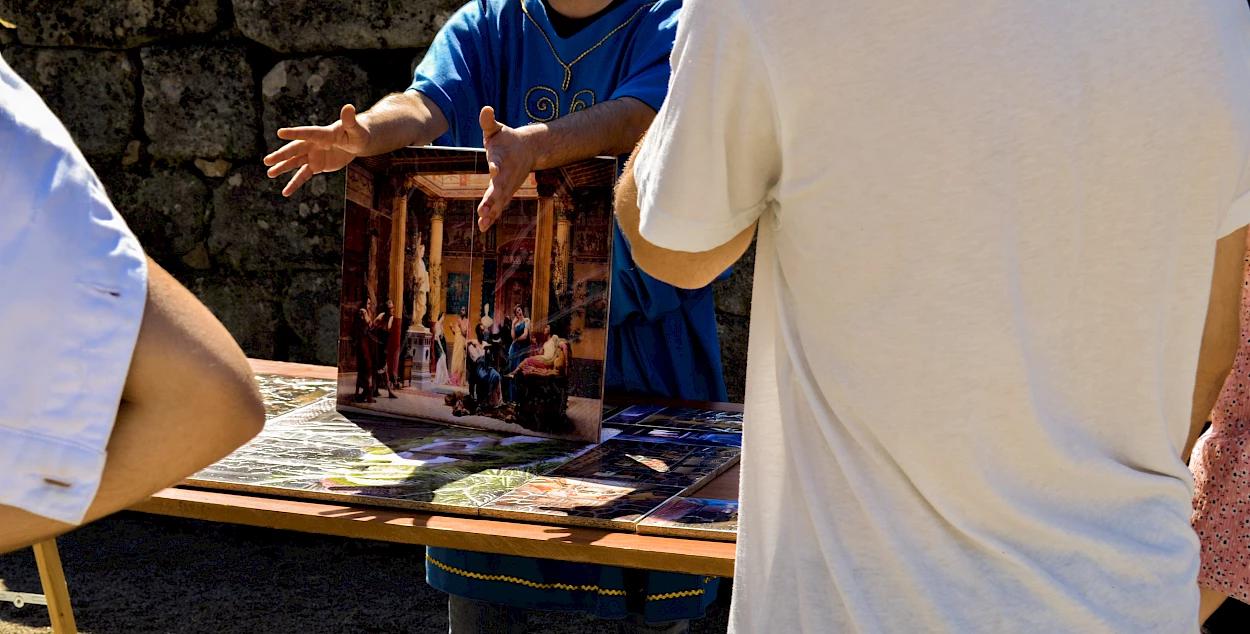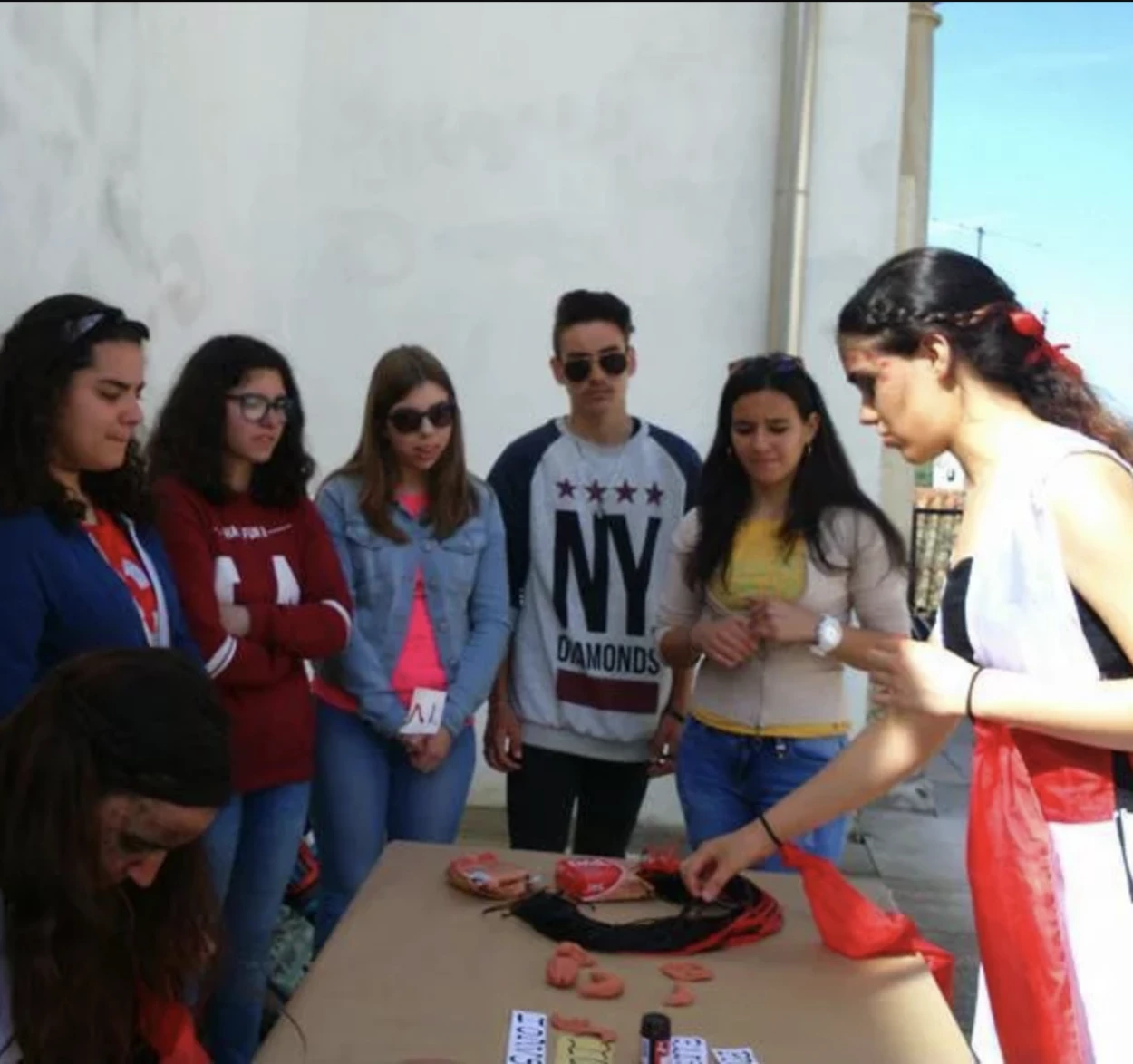Mythology
This workshop covers several games.
Board with the genealogy of the gods
Starts with a theoretical-practical explanation to a group of the genealogy of the gods: the person in charge of the board provides the information and the children try to find the pieces to complete the board. The purpose of this workshop is for children to learn the name of the gods and their attributes so that they can identify images of the gods.
Die set
Human-sized board game. Children are distributed across the boards, placing one child per row (6 children per board). The goal is to go to the house that the date points to and guess which character the date landed on. If you hit it, you stay in the house, if you miss, you go back to where you were. Whoever finishes the board first wins.
Who’s who
Crafts: ceramics
Rope game
Latin
This content is loaded from a third-party and is not available because your browser has cookies disabled.
Here's what you can do:
Introduction to conversational Latin. Children are encouraged to express themselves in Latin, using songs, expressions, and simple phrases.
Writing
Alimentação
DOMVS
Bulla
There is a small explanation of what is the bulla: a small ball of gold or leather that the children wore around their necks until they reached the age of wearing the manly toga. It could contain amulets, spells or perfumes and had the function of protecting the child. The women wore the lunula, an amulet that was usually shaped like a crescent moon. In this activity, the children will make a bulla or lunula in clay and inside they will put a paper with a written desire. Children are given a piece of paper to write their wishes and the monitor puts it inside a piece of clay and adds the thread. It is then given to the child for her to mould to his/her liking. The monitor must be attentive to the children and help if they need it.


